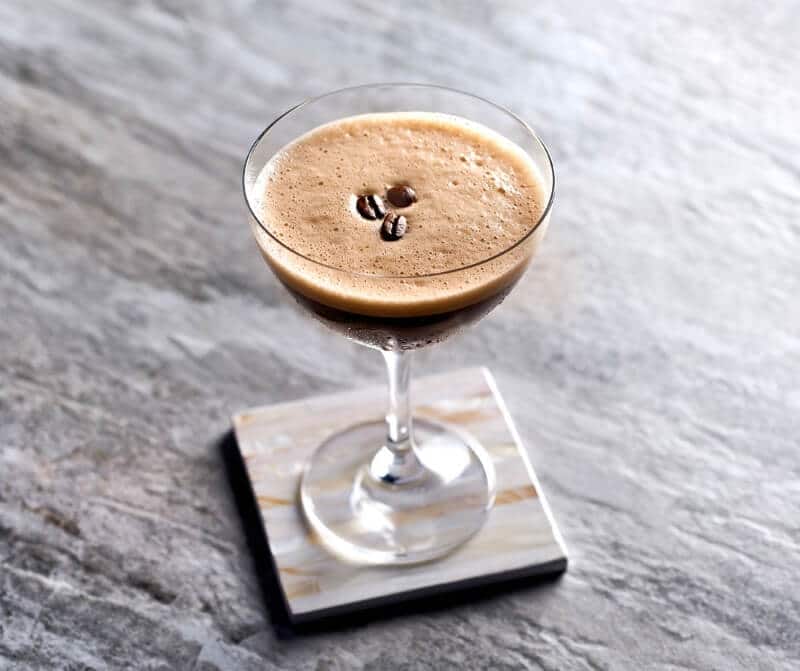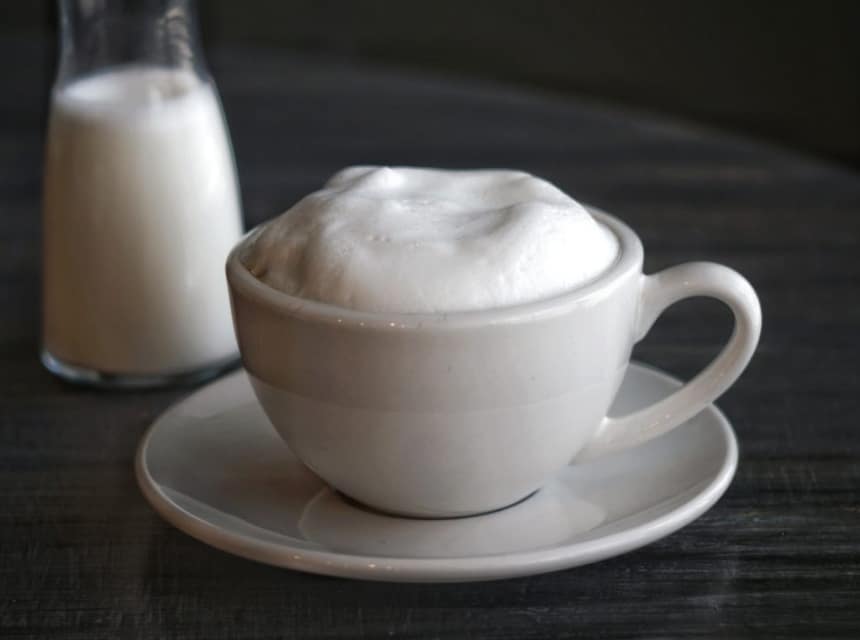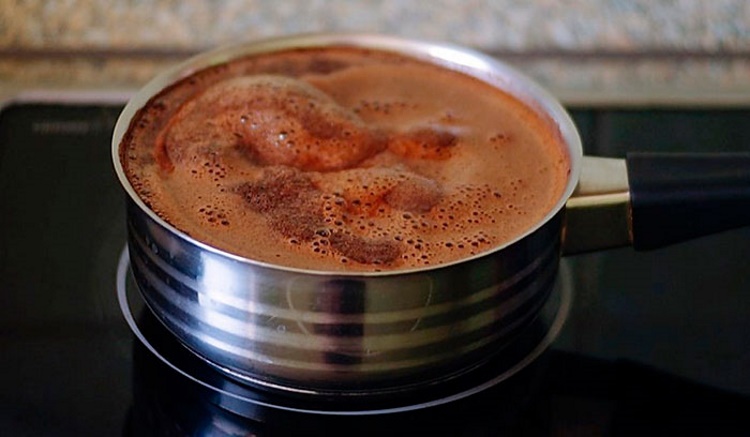

If you enjoy Starbucks vanilla espresso coffee, you have probably wondered how to make flavored coffee beans with hazelnut and other spices?
Although some coffee connoisseurs consider it sacrilegious to add flavor to their coffee since they consider the distinctive rich and smooth taste of straight coffee superior, the practice has been around for ages. People flavor their coffee with palm oil in Malaysia, or Guinea pepper and cloves in Senegal, or anise and cinnamon sticks in Mexico. Nutmeg, black pepper and cardamom are the common spices added to coffee in Morocco.
We will explain how to flavor coffee beans at home for additional taste and aroma instead of ordering flavored coffee that could be masking the lower grade beans that big businesses often use to meet the high demand.
Infusion or immersion brewing is a brewing method where the coffee beans are submerged in water. This process is used to make pour-over, French press, cold brews and traditional drip coffee.
Flavored coffee has been in high demand since the popularity of gourmet coffee in the 1990s and also because of recent improvements in technology that has resulted in more people learning how to add flavor to coffee beans after roasting them to extract the additional flavor into the final beverage.
How do you infuse flavor into coffee beans? Flavor infusion involves coating coffee beans with flavors that complement the natural taste of coffee by creating a sharper contrast between the different flavors. LorAnn Pumpkin Spice Bakery Emulsion comes in a 4-ounce bottle that you can add to your baking recipes or to brewed coffee to make pumpkin-spiced coffee for a kosher diet.
You can use synthetic flavor chemicals or infuse natural oils from spices and plants such as berries, vanilla pods, nuts and cocoa beans to flavor coffee beans naturally.
How is flavored coffee made? Many commercial coffee brands flavor coffee beans with natural and synthetic oils. Natural oils are extracted from cocoa beans, vanilla, nuts and spices whereas synthetic oils use chemical flavor compounds such as 2,5-Dimethylprazine to produce an earthy flavor or 2,4-Dimethyl-5-acetylthiazole to generate a woody or nutty flavor.
Coffee manufacturers blend and then dilute these chemical agents in solvents such as alcohol, propylene glycol or water to spray several oils to coffee beans. You might have to use up to 80 ingredients to achieve certain flavors.
There are different techniques that commercial coffee brands use to make flavored coffee beans. Some involve soaking green coffee beans with spices like cinnamon sticks or fermenting the beans with carbon dioxide in an airtight stainless steel tank before roasting them for refined acidity that adds a fruity note to the coffee beans.
Another method is to add flavored oils after roasting the coffee beans. Coffee consists of bioactive compounds that change Trusted Source From Plantation to Cup: Changes in Bioactive Compounds during Coffee Processing Coffee is consumed not just for its flavor, but also for its health advantages. The quality of coffee beverages is affected by a number of elements and a series of processes, including: the environment, cultivation, post-harvest, fermentation, storage, roasting, and brewing to produce a cup of coffee. www.ncbi.nlm.nih.gov during processing, and roasting is an important stage that produces the flavor, aroma and color of coffee. You can steep brewed coffee with spices, eggs and butter soon after roasting it or coat roasted beans with flavored oils that the beans absorb. That is how you roast coffee beans with flavor. Some manufacturers also make flavored coffee grounds and then package it in permeable bags to allow for off-gassing.
You can flavor your own coffee beans or buy flavored coffee grounds. As we mentioned earlier while discussing how flavored coffee is made, manufacturers use chemical compounds that are then diluted in propylene glycol so that coffee beans can accommodate multiple oils. The first concern is the potential health risks posed by these chemicals since there certain flavors may contain up to 80 chemical compounds and up to 85% propylene glycol.
Secondly, the natural flavor profile of coffee can tell us a lot about the coffee roast and the region where the coffee has been grown or processed because different regions and roasts have different flavor profiles. As a result, some coffee lovers frown on buying flavored coffee because it alters and supplements the natural taste of coffee. They fear that some manufacturers may add flavor to low-quality coffee beans to disguise them as premium flavored coffee beans and mask any flavor profile changes caused by aging, oxidation and decaffeination of their products.
We have reviewed the best flavored coffee products that are infused with natural flavors like chocolate and pecan so you can enjoy your favorite beverage at home. We will also explain how to infuse flavor into coffee beans by using different additives to achieve a personal taste.
If you are wondering how to flavor your own coffee beans with alcohol, we assure you that it is a simple process of soaking the roasted coffee beans in an airtight container with tequila, bourbon, rum, red wine, whisky, or beer. The process allows you to make flavored coffee with your favorite coffee bean and alcohol.
Put the coffee beans in a sealable jar and then add the alcohol to infuse flavor into the coffee beans. Shake the jar for a few minutes and then place it in a cool, dark place for approximately 24 hours to brew it. Next, taste the mixture to check if it has your desired level of infusion. You may allow the mixture to sit for a longer time, like another 8 hours, to produce a richer and bolder flavor.
After that, strain the coffee beans and dry them before you grind them to make flavored coffee grounds.
What do you do with the coffee-infused alcohol? Well, you can use the caffeinated alcohol to make espresso martini and other recipes.
Research shows that consuming 3 to 5 cups of coffee daily may reduce the risk of certain cancers, type 2 diabetes and cardiovascular diseases. However, a Beverage Guidance Panel that included researchers from the Department of Nutrition at Harvard School of Public Health Trusted Source Healthy Beverage Guidelines In the beginning there was water—abundant, refreshing, providing everything the body needs to replenish the fluids it loses. www.hsph.harvard.edu found that routine consumption of flavored tea and coffee can increase the risk of type 2 diabetes and weight gain.
Coffee beans have a natural favor that is nutty, fruity or with cherry notes. You can also achieve the nutty aroma and flavor with the best hazelnut coffee brands that are also available as coffee pods or ground coffee for people without the time and equipment to grind coffee beans. Some of them feature both hazelnut and coconut flavors as well as coffee.
Using coffee flavoring oils is one of the most popular methods of flavoring your own coffee beans at home immediately after the roasting process. Use 1 to 3 teaspoons of flavoring oil for every pound of coffee unless the oil manufacturer recommends otherwise.
Add the oil to the coffee beans and shake them to coat them with oil and then seal them and allow them to soak in the oil for at least an hour or more to maximize oil absorption for a stronger flavor.
Next, dry the now flavored coffee beans before grinding them.
Great options for coffee flavoring oils include mocha, mint and vanilla that you add to produce roast flavored coffee.
Although syrups are mainly used by commercial brands, you may use ready-made flavored syrups such as By The Cup Pump & Syrup Combo as a substitute for flavored oils to flavor your own coffee beans with hazelnut and French vanilla taste with rich caramelized notes.
We recommend using ready-made syrup if you are just starting out. Otherwise, you can create your own syrup by mixing equal parts of sugar and boiling water and then adding vanilla as the base since it is easily available. It also soaks well into coffee beans without overwhelming the natural flavor of coffee. Next, add cinnamon, hazelnut or caramel to the vanilla and add the mixture to whole beans to customize your coffee drink with a distinct flavor.
Allow the beans to sit for 15 minutes to infuse flavor into the coffee beans and then dry them before you grind them.
You can also flavor syrup with orange peels, ginger or other spices.
Clove, cinnamon, nutmeg, cardamom and clove spices are used to flavor coffee beans naturally around the world.
Add ground spices or whole spices such as nutmeg seeds, cinnamon sticks, vanilla pods, peppermint, or clove buds to coffee beans in a sealed container and store them in a cool dark place for at least an hour or longer to intensify the flavor.
Those who do not like pronounced flavor in coffee beans while roasting should check out the best medium roast ground coffee that is typically less acidic with a rich flavor that is neither too strong nor too weak.
You may prefer a single spice or experiment with various combinations to add flavor to coffee beans before, during and after the brewing process. Grind the spice with the whole beans in a grinder or sprinkle the spice on ground coffee in your brewer or store whole spices with whole beans to extract and infuse flavor into coffee beans. If you grind the spices with the whole beans, keep in mind that the next batch in the grinder may have lingering flavor notes from the previous batch.
Using spices to add flavor coffee beans at home takes longer than using flavoring oils and syrups to achieve the desired flavor. However, and it might be a healthier alternative because some spices such as clove, nutmeg, black pepper and cinnamon have antioxidants that boost our immune system. Use half a teaspoon of ground spice for every 6 cups of coffee.
According to the National Coffee Association USA Trusted Source 10 Steps from Seed to Cup The coffee you enjoy each day has taken a long journey to arrive in your cup. www.ncausa.org , green coffee beans turn brown and release fragrant oil via pyrolysis when they reach an internal temperature of 400 °F.
Let’s look at how to flavor coffee beans while roasting.
The best time to make flavored coffee grounds is to add your preferred flavor to freshly roasted beans to optimize absorption. The general rule of thumb is to add 3% flavor of the total weight of the coffee which translates to about an ounce of syrup per 3 pounds of coffee to avoid a bitter overpowering taste from high concentrations of syrup.
To produce roast coffee beans with flavored syrup, mix the syrup and roasted coffee beans by hand or with a professional mixer for a minimum of 15 minutes. Warm coffee beans are more porous than cold beans and better at allowing you to infuse flavor into coffee beans to make roast flavored coffee.
Below are answers to some of your questions about how to roast coffee beans with flavor.
We have explained how to flavor your own coffee beans at home. If you want a quick fix, purchase flavored coffee beans, ideally Arabica beans since they perform better than Robusta beans at flavor infusion.
We have explained how flavored coffee is made and the different flavors available. The main categories are fruit-based, spice-based, nutty and chocolate flavors. Vanilla, caramel, hazelnut, peppermint oil, cinnamon, pumpkin pie, Irish cream, coconut milk, whiskey, and rum are some of the more popular options that are sometimes mixed to create unique flavor profiles.
The greatest advantage of understanding how to flavor coffee beans naturally is that you have greater control over the type of coffee bean, the roasting and brewing process and the resultant flavor. Thanks to technology, you can now combine different ingredients that may include alcohol, spices, syrup and oils to infuse flavor into coffee beans and experiment with different aromas and coffee profiles.
What’s more, you do not need require a lot of money or specialized equipment to learn how to flavor coffee beans at home. Remember to use additives sparingly to avoid making the distinct natural coffee flavor undetectable. While flavoring your own coffee beans has numerous advantages, you could also buy flavored Arabica coffee beans if you are short on time.





